Supervisor: Dr Mark Edmonds
Realising new intrinsic magnetic topological insulators and heterostructures for lossless transport applications at high temperature
Van der Waals materials have widely varying electronic properties including topological insulator (TI) behaviour (Bi2Se3/Bi2Te3), and ferromagnetism in 2D (CrI3). However, these materials are distinct i.e. they possess topological or magnetic properties but not both. The intrinsic magnetic topological insulator MnBi2Te4 was recently proposed and experimentally verified as a bulk antiferromagnetic topological insulator that hosts both intrinsic magnetism and topological protection. In thin film form, MnBi2Te4 is a quantum anomalous Hall insulator, where current flows along chiral edge states without dissipation, with potential for lossless transport applications. Yet, the operating temperature at which lossless transport can be achieved is governed by fundamental electronic and magnetic properties such as the bandgap and the magnetic ordering temperature (Curie/Neel temperature). For MnBi2Te4, lossless transport has only been achieved at liquid helium temperatures.
In this project you will join a group working at the cutting edge of the field that are experts in the growth of 2D systems.1-3 Your goal will be to grow new intrinsic magnetic topological materials, as well as designer ferromagnet/topological insulator heterostructures that are predicted to be quantum anomalous Hall insulators at higher temperature. Samples will be grown using molecular beam epitaxy (MBE), which is a technique that allows the precise growth and control of epitaxial large area films. After successfully growing these materials, you will employ angle-resolved photoelectron spectroscopy (ARPES) at the Australian Synchrotron and international synchrotrons such as Advanced Light Source, Berkeley in order to study the electronic bandstructure. To understand the size of the bandgap, and measure the thickness and temperature dependent topological phase transitions.
1 C. X. Trang,.., M. T. Edmonds, Crossover from 2D ferromagnetic insulator to wide bandgap quantum anomalous Hall insulator in ultra-thin MnBi2Te4, ACS Nano DOI: 10.1021/acsnano.1c03936
2 Q. Li,.., M. T. Edmonds, Large bandgap quantum anomalous Hall insulator in a designer ferromagnet-topological insulator-ferromagnet heterostructre, arXiv:2105.08298
3 J. Collins,.., M. T. Edmonds, Electric-field-tuned topological phase transition in ultra-thin Na3Bi, Nature DOI: 10.1038/s41586-018-0788-5
Funding Notes:
Applicants should hold a first class Honours or Masters degree (or equivalent) and should have a strong background in physics. In addition, the advertised position would suit applicants with experience in experimental physics, in particular surface science or condensed matter physics.
Important Dates and scholarship amount:
Four application rounds per year, with deadlines for International Students of 31st March and 31st August and Domestic Students on 31st May and 31st October. Students will receive a $29,500 per year scholarship, and top-ranked or exceptional candidates may also be eligible for top-up scholarships of up to $10,000 per year.
Contact Dr Mark Edmonds (Mark.Edmonds@monash.edu) for more information or submit an expression of interest at fleet.org.au/phd.

